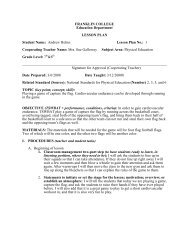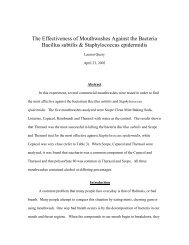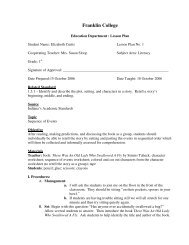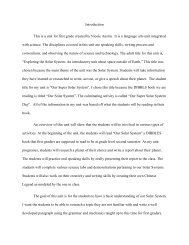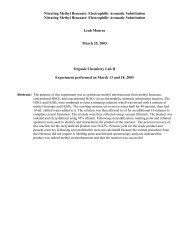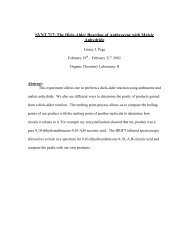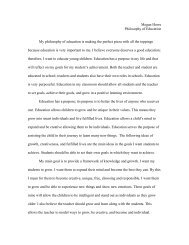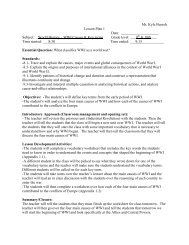Melissa Bockhold Heather Coddington - Franklin College
Melissa Bockhold Heather Coddington - Franklin College
Melissa Bockhold Heather Coddington - Franklin College
Create successful ePaper yourself
Turn your PDF publications into a flip-book with our unique Google optimized e-Paper software.
the value seen in its VERITAS holdings would result in a higher share price. Both of<br />
these actions, however, failed in increasing the incredibly low stock price, so Seagate’s<br />
management had to look for other options.<br />
The company could have cut its losses by liquidating its assets and completely<br />
getting out of the market. The problem with these options lies in the fact that huge tax<br />
liabilities would be incurred for the company and its shareholders, and the entity would<br />
be permanently terminated. The only other option for Seagate was a buyout or merger.<br />
The plan they formulated and executed, a leveraged buyout, was an alternative to<br />
liquidation. First, the creation of corporate or personal tax liabilities would be avoided.<br />
Also, the company would be able to continue operations. As a result of the leveraged<br />
buyout, Seagate will be a privately held company, and they will no longer trade stock in<br />
today’s market. After the equity investors exit, Seagate will be able to re-enter the<br />
market and issue their stock to be valued based on the company’s performance alone.<br />
Management hopes that this action will result in the fair valuation of their stock once<br />
public status is reinstated (Austin).<br />
We agree with the Seagate senior management’s decision to go ahead with the<br />
two-stage leveraged buyout. By avoiding heavy taxation, everyone wins. This was the<br />
only option for Seagate to use if they were to ensure both the happiness of shareholders<br />
and the future of the Seagate name and company.<br />
B. Buyout Financing & Capital Structure<br />
It is apparent from the above section that, over time, significant changes have<br />
occurred in the capital structure of companies post-buyout. The downturn of the business<br />
cycle, the near collapse of the junk bond market and diminished structural advantages<br />
20




